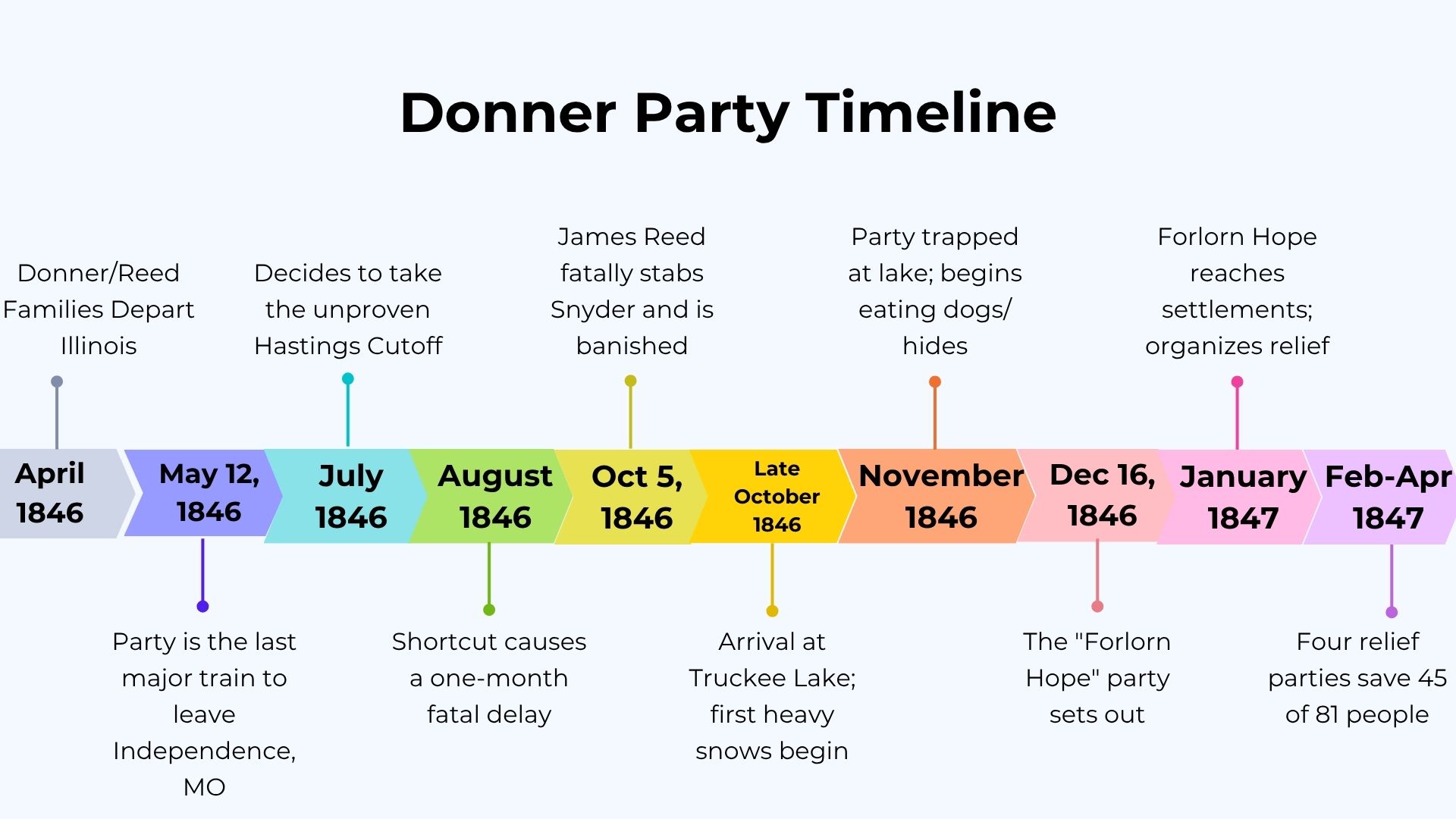The Donner Party tragedy was a cause of several poor decisions. A late departure, poor preparations, and the use of an unknown route all led to what is now known as the most tragic event in American western migration.

The Road to Disaster: The Folly of the Hastings Cutoff
The party’s troubles began with a late start, leaving Independence, Missouri, on May 12, 1846. Their key mistake, however, was following the advice of Lansford Hastings, who promised a 400-mile shortcut through the Wasatch Mountains and the Great Salt Lake Desert. Despite warnings, the core group took this unproven route, which was actually longer and far more difficult than the established trail. The difficult passage forced them to clear an arduous path, delaying them by a fatal month and causing them to reach the Sierra Nevada far too late.
Snowbound: The Winter of Starvation at Donner Lake
Following their arduous passage through the desert, the exhausted Donner Party arrived at the slopes of the Sierra Nevada on October 31, 1846, only to be met by exceptionally heavy, early snow. Trapped without sufficient shelter or supplies, they were forced to build crude cabins near what is now Donner Lake. As the reserves of food quickly disappeared, the pioneers resorted to eating their dead oxen, cowhides, and even their dogs to survive. Recognizing that waiting meant death, fifteen of the strongest members, now famously known as the “Forlorn Hope,” fashioned crude snowshoes and set out on December 16 in a desperate, last-chance effort to hike for rescue.
Desperation and Rescue: Sacrifice and Survival
The journey of the Forlorn Hope was brutal; only seven of the original fifteen survived the thirty-three day ordeal, having resorted to cannibalism to live. News of the disaster prompted relief efforts in California, and four separate relief parties were heroically organized, beginning their trek in late January 1847. The first party reached the lake camp on February 18, 1847, evacuating the weakest, mostly children. The ordeal finally ended when the last survivor to be located by rescuers, the Prussian pioneer Lewis Keseberg, was found in April 1847, ending one of the most tragic and desperate chapters in westward migration history.

Sources and Archive Links:
https://web.archive.org/web/20250720225013/https://www.history.com/articles/10-things-you-should-know-about-the-donner-party
https://www.history.com/articles/10-things-you-should-know-about-the-donner-party
https://commons.wikimedia.org/wiki/File:Donner_route_map.png
